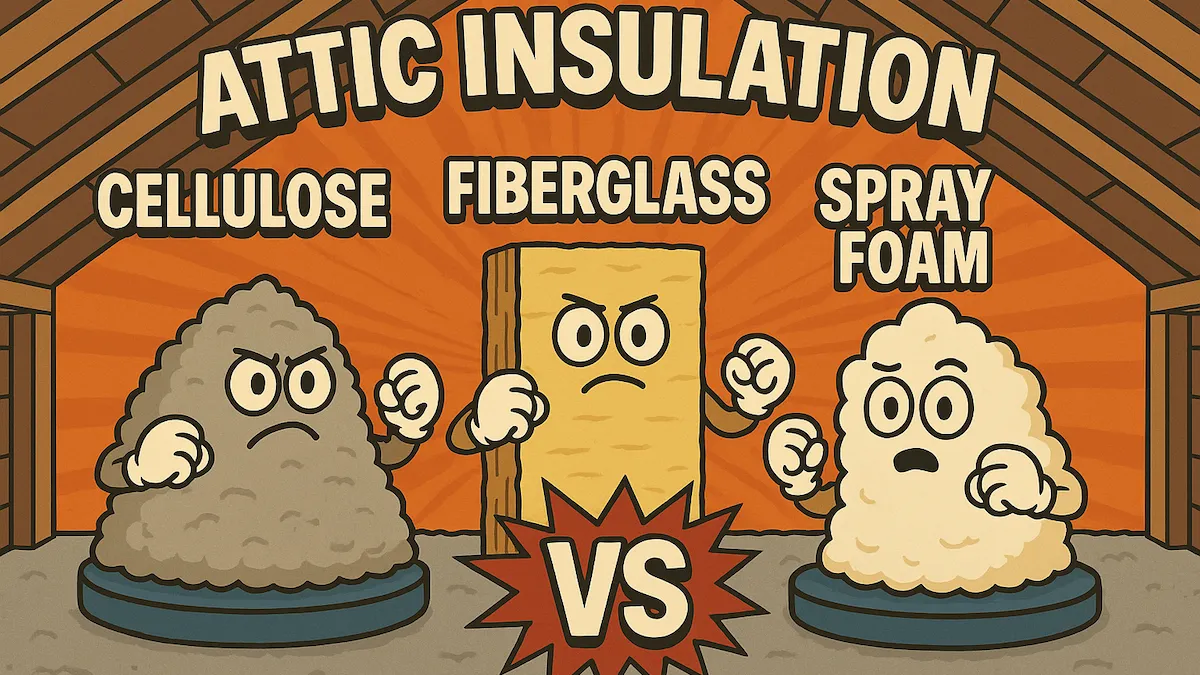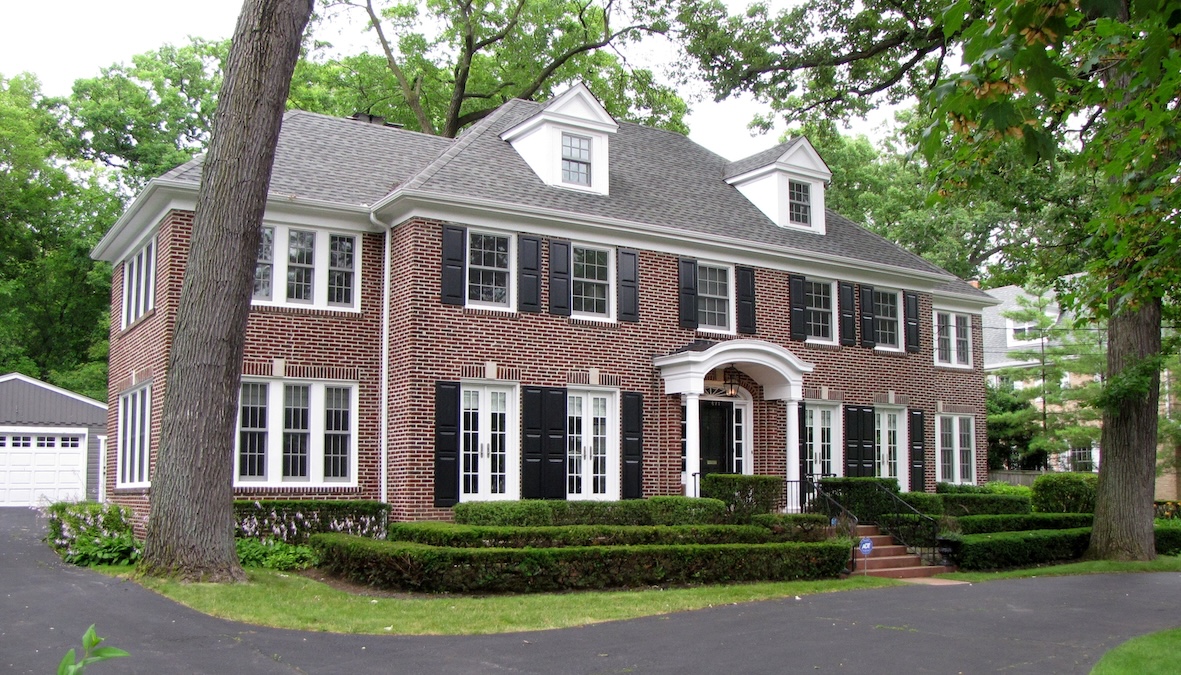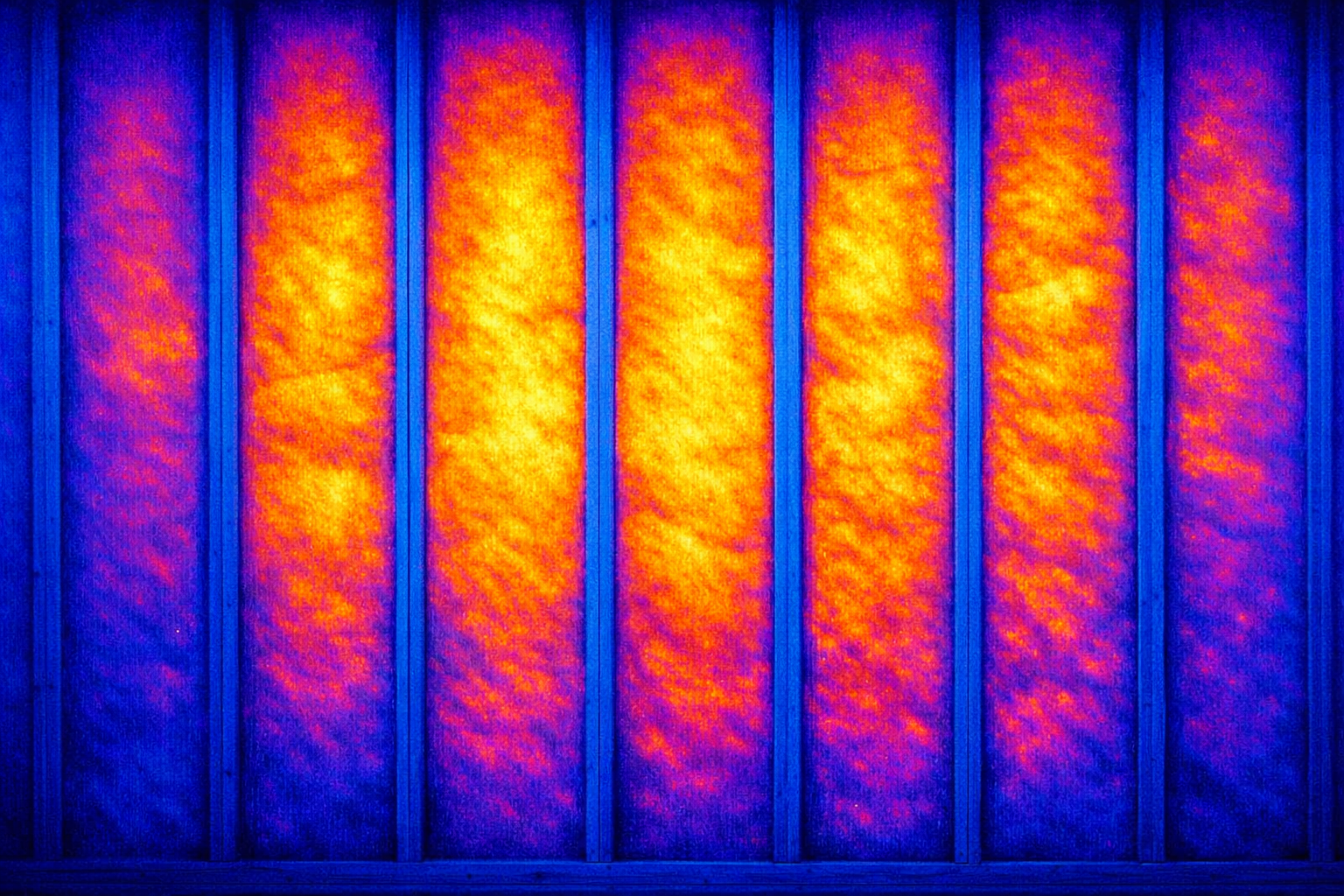What’s the Best Insulation for an Attic?

You ever walk upstairs in the summer and feel like you’ve entered a sauna—while the AC’s blasting downstairs? Or open your heating bill in February and mutter words you wouldn’t say in church? Yeah, that’s your attic trying to tell you something.
Here’s the deal: Most attics in Connecticut are either under-insulated, poorly insulated, or insulated with the wrong stuff altogether. We’ve seen it all—sloppy batts, flattened fiberglass, or a few inches of blown-in fluff that hasn’t been touched since the '90s.
The right attic insulation does more than keep your upstairs from turning into a hotbox or an icebox. It helps your entire home hold a consistent temperature, slashes your energy bills, and keeps your heating and cooling systems from working overtime. This isn’t just a comfort upgrade—it’s an investment that pays for itself faster than most home projects.
In this Connecticut attic insulation guide, we’ll break down the options, compare materials, and help you figure out the most energy-efficient attic insulation for your home—so you can stop heating the neighborhood and start keeping that money in your pocket.
Why Attic Insulation Even Matters
Let’s get one thing straight: heat rises. In the winter, all that expensive warm air you just paid to pump into your house? It’s heading straight for the attic. And in the summer, your attic turns into an oven, and that heat tries to roast the rooms below.
That constant push and pull is called the stack effect, and it’s one of the biggest culprits behind high energy bills and uneven temperatures.
That’s where attic insulation—and proper air sealing—come in. Insulation slows the flow of heat, but if your attic isn’t sealed tight, you’re still leaking air like a tire with a nail in it. You need both to keep your house comfortable and your HVAC system from working double shifts.
In Connecticut, we get the worst of both worlds: freezing winters and muggy, blazing summers. That means we need attic insulation with a high enough R-value (aka resistance to heat flow) to perform year-round. The best insulation for cold climates—like dense-packed cellulose or closed-cell spray foam—not only keeps the warm air in during winter, but also blocks the heat during summer.
Done right, insulating and sealing your attic can cut energy loss by 25% or more. That’s real savings—and real comfort.
Choose Your Fighter: Types of Attic Insulation (Pros & Cons)
Not all attic insulation is created equal—and what works in one home might be a total miss in another. Here’s a breakdown of your main contenders:
A. Fiberglass Batts
This is the old-school pink stuff you’ve seen at hardware stores. It’s cheap and relatively easy to install, but it’s not great for air sealing. Batts can sag over time or be installed with gaps, which means cold spots and wasted energy. That said, if your attic is well-ventilated and your budget’s tight, it’s a workable option.
TL;DR: Budget-friendly, but not ideal for airtight performance.
B. Blown-In Fiberglass
Think of blown-in fiberglass as the upgraded version of batts. It’s loose-fill, so it covers better and works well for topping off existing insulation. But it still doesn’t stop air movement as effectively as cellulose or foam. Common in retrofits or code-compliance jobs.
TL;DR: Better coverage, but still weak on air sealing.
C. Cellulose Insulation
Now we’re talking. Whether Cellulose dense-packed or blown-in, cellulose is a beast at stopping air leaks and improving comfort. Made from recycled paper and treated for fire and pest resistance, it settles into every nook like it was born to be there. It also cuts down on sound transfer.
TL;DR: Eco-friendly, great for air sealing, solid performer—especially in older homes.
D. Spray Foam (Open-Cell & Closed-Cell)
The heavy hitter. Spray foam delivers top-tier R-value, creates a rigid air and moisture barrier, and doesn’t leave gaps. Closed-cell is especially good for cold climates like Connecticut—it adds structural strength and resists water like a champ. More expensive up front, but pays off in the long run.
TL;DR: Best performance, best seal, highest cost—ideal for tricky rooflines or do-it-once installs.
It Depends on the House, Not the Hype
If you’re asking, “What’s the best insulation for my attic?” the honest answer is: it depends. Not on marketing. Not your neighbor’s opinion. Your attic. Your goals. Your budget.
Let’s break it down.
- Age of the Home
Older homes in Connecticut often have little-to-no insulation—or sad old batts that stopped working years ago. Dense-packed cellulose or spray foam can make a dramatic difference here. - Roof Condition
If your roof’s due for replacement or has had leaks, moisture-resistant options like closed-cell spray foam are smart. Wet insulation = mold, rot, and repairs. - Ventilation & Air Sealing
Some attics need to breathe with ventilation. Others should be sealed tight. If yours leaks air like a screen door, you need insulation that acts as an air barrier—like cellulose or spray foam. - Budget vs. Long-Term Savings
Fiberglass is cheap upfront. Spray foam costs more, but pays off in energy savings. We’ll help you run the numbers. - Moisture & Mold Risks
Poor sealing creates a breeding ground for mold. Choose the right material—and install it right—to keep your attic dry and healthy.
Bottom line: No one-size-fits-all. Choosing attic insulation means knowing what your home needs.
Don’t Guess—Measure
So how much insulation do you actually need? Short answer: probably more than you’ve got.
In Connecticut, shoot for R-49 or higher in your attic. That’s around:
- 16–18 inches of loose-fill fiberglass
- 13–15 inches of cellulose
- Less thickness if using high-R-value spray foam
What’s R-Value?
R-value measures how well insulation resists heat flow. Higher = better. It’s the difference between a home that’s cozy and one that’s constantly too hot or too cold.
Quick Reality Check
Pop your head in the attic. See joists? Patchy or compressed insulation? Haven’t touched it in 20+ years? You need more. Most Connecticut attics are under-insulated by 30–50%.
We’ll measure for you—and let you know exactly how much you need.
DIY vs Hiring a Pro
Know When to Roll It Yourself—and When to Call In Backup
If your attic is open, easy to move around, and you’re laying fiberglass batts—sure, DIY can work. It’s budget-friendly and available at every big box store.
When to Call the Pros
Tight corners? Vaulted ceilings? Moisture issues? Then you need a pro. Air sealing, spray foam, blown-in cellulose—these jobs need the right equipment and expertise. Plus, pros make sure you hit the right depth, seal every gap, and don’t mess up your ventilation.
DIY attic insulation vs professional isn’t just about cost—it’s about performance. Done right, it saves money every month. Done wrong, it underperforms for years.
What Will It Cost—and Is It Worth It?
Attic insulation is one of the smartest investments you can make. Here’s what it costs in Connecticut:
- Fiberglass batts or rolls: $1.50–$2.50/sq ft
- Blown-in fiberglass: $2.00–$3.00/sq ft
- Blown-in cellulose: $2.50–$3.50/sq ft
- Spray foam (open-cell): $3.50–$5.00/sq ft
- Spray foam (closed-cell): $5.00–$7.00+/sq ft
Prices vary based on attic size, condition, and whether removal is needed. That’s why we offer free assessments.
Why It Pays Off
A properly insulated attic can cut your energy bills by 15–27%. Add in better air quality, fewer drafts, and longer HVAC life—and you’ve got a win.
There are also rebates and incentives available through EnergizeCT and utility programs. We’ll help you find and claim what you’re eligible for.
Energy-efficient attic insulation = year-round comfort + real savings.
Common FAQ's about Attic Insulation
Will new attic insulation reduce noise from outside or between floors?
Yes, new attic insulation can reduce noise from outside and between floors. Dense-pack cellulose and spray foam are especially effective at absorbing sound, making upper floors quieter and reducing outdoor noise like traffic or wind. They provide both thermal and acoustic benefits, improving overall comfort in the home.
Can attic insulation help with ice dams in winter?
Yes, attic insulation helps prevent ice dams by stopping warm indoor air from leaking into the attic and melting roof snow. Proper insulation and air sealing maintain cold attic temperatures, reducing the risk of snowmelt and refreezing at the eaves—two key causes of winter ice dams in colder climates.
What’s the difference between vented and unvented attic insulation strategies?
The main difference between vented and unvented attic insulation is placement and airflow. Vented attics insulate the attic floor and allow outdoor air to circulate through vents. Unvented attics apply spray foam to the roof deck, sealing the space as part of the home’s thermal envelope. Each approach suits different home designs and climate needs.
Will insulating my attic help with uneven room temperatures throughout the house?
Yes. Insulating your attic helps with uneven room temperatures by reducing heat loss in winter and heat gain in summer. It blocks drafts and stabilizes indoor temperatures—especially in upstairs rooms where heat rises. Pairing insulation with air sealing further improves comfort across your entire home.
How long does attic insulation last before it needs to be replaced?
Attic insulation typically lasts 20–30 years if installed correctly and kept dry. Moisture, pests, or compression can shorten its lifespan. Fiberglass batts often degrade sooner, while dense-pack cellulose and spray foam last longer—especially when combined with proper air sealing to prevent air and moisture intrusion.
Final Take: There’s No One-Size-Fits-All
When it comes to attic insulation, there’s no universal “best.” It depends on your home’s age, your attic’s layout, your energy goals, and your budget.
Don’t fall for the hype—go with what solves your attic’s specific problems. Some homes need cellulose, others need foam. Some just need a good top-off and proper sealing.
Related Articles
Let's Work Together
Ready to transform your home into an energy-efficient haven? Schedule your free energy assessment today and experience the Nealon difference for yourself.



